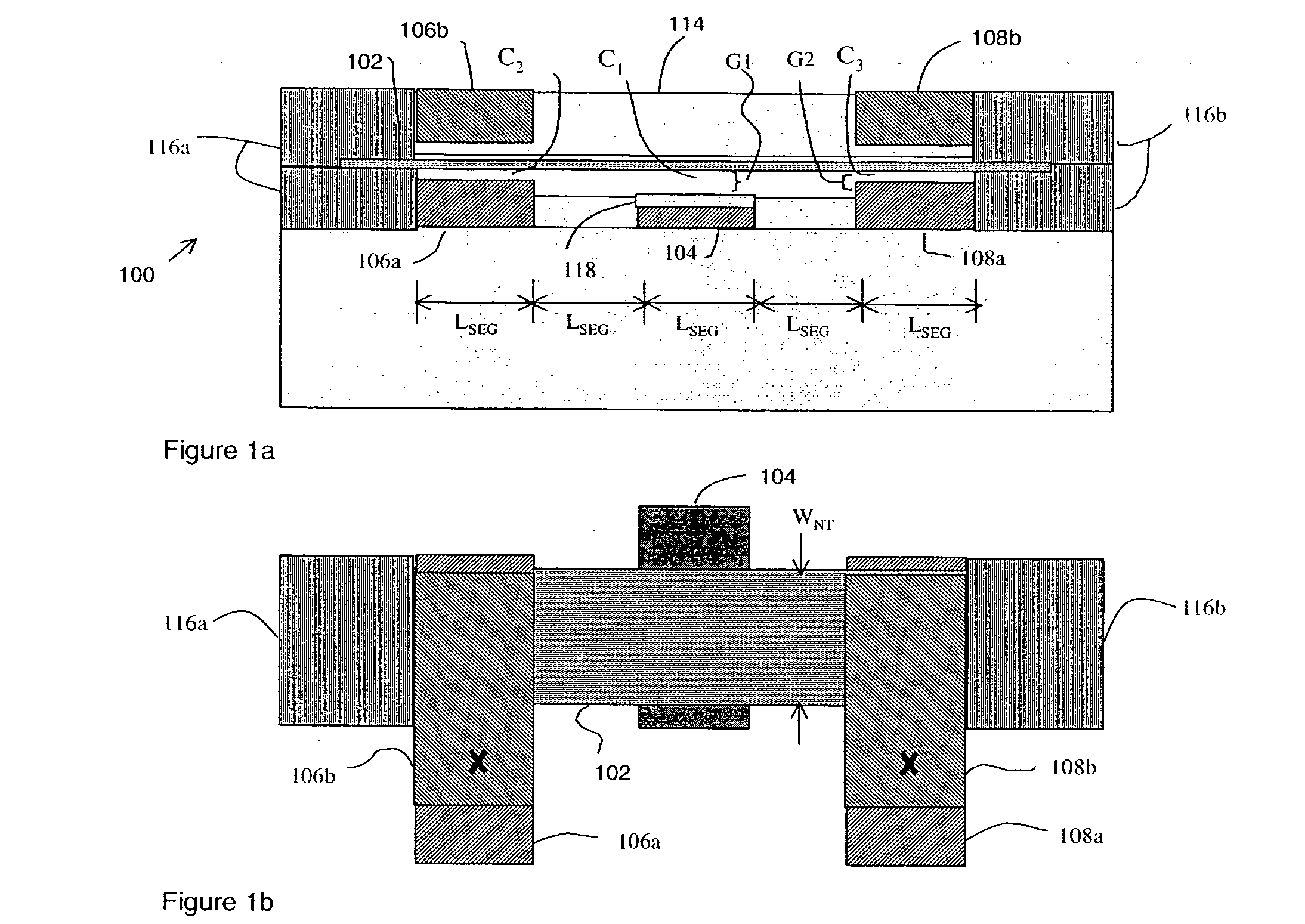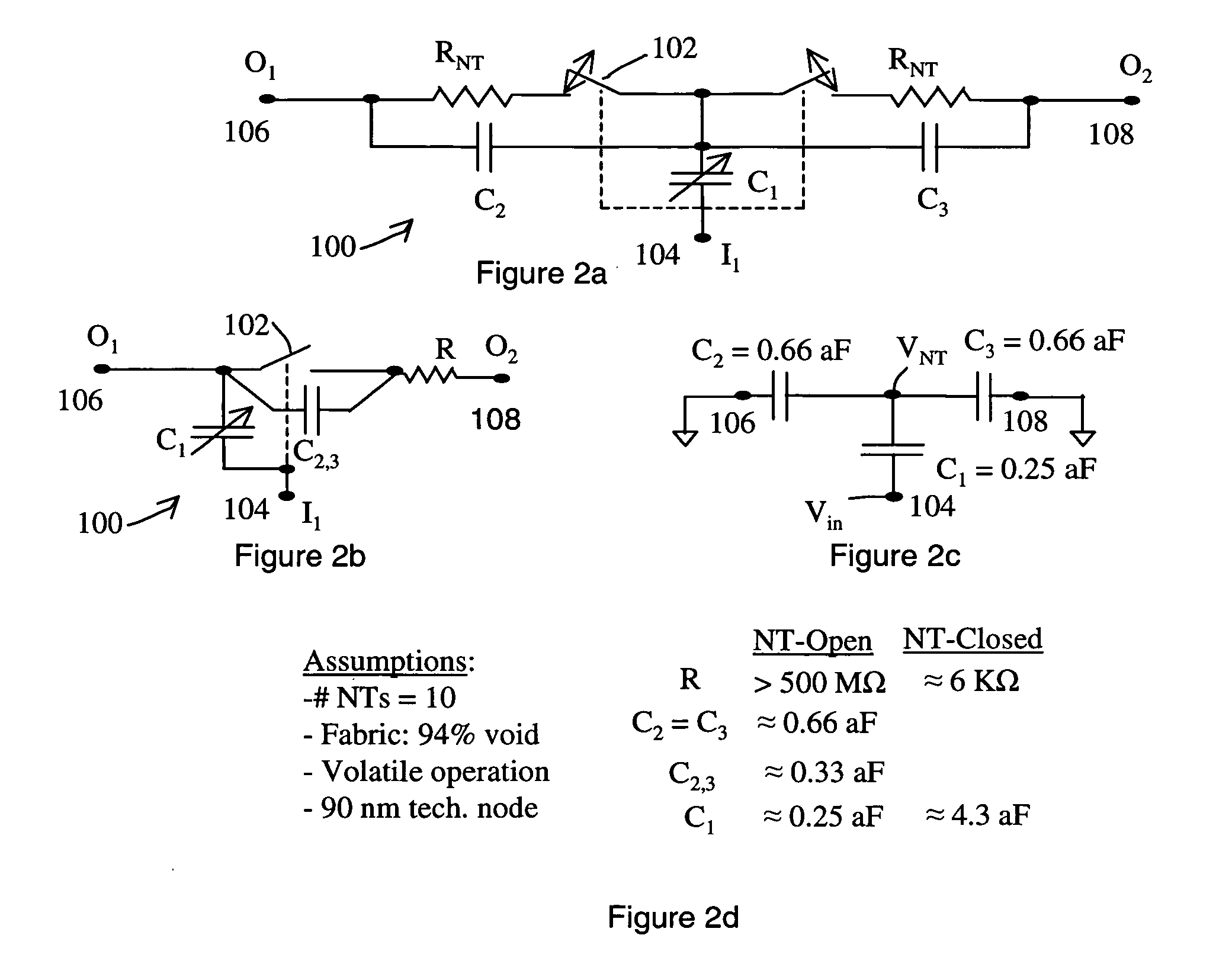Nanotube-based transfer devices and related circuits
a transfer device and nanotube technology, applied in nanoinformatics, relays, instruments, etc., can solve the problems of low density, low capacitance, and limited density of bipolar digital integrated circuits, and achieve the effect of increasing problems such as leakage current, no forward voltage drop, and low capacitan
- Summary
- Abstract
- Description
- Claims
- Application Information
AI Technical Summary
Benefits of technology
Problems solved by technology
Method used
Image
Examples
Embodiment Construction
[0066] The invention provides nanotube transfer devices that controllably form a nanotube-based electrically conductive channel between a first node and a second node under the control of a control node, and also provides electrical circuits incorporating such nanotube transfer devices. The electrical potential at the control node induces a nanotube channel element to deflect into contact with or away from an electrode at each node. Each output node may be connected to an arbitrary network of electrical components. In certain embodiments, electrical circuits are designed to ensure proper switching of nanotube transfer devices interconnected with arbitrary circuits. The nanotube transfer device may be volatile or non-volatile. In preferred embodiments, the nanotube transfer device is a three-terminal device or a four-terminal device. The nanotube transfer device of various embodiments can be interconnected with other nanotube transfer devices, nanotube-based logic circuits, nanotube ...
PUM
 Login to View More
Login to View More Abstract
Description
Claims
Application Information
 Login to View More
Login to View More - R&D
- Intellectual Property
- Life Sciences
- Materials
- Tech Scout
- Unparalleled Data Quality
- Higher Quality Content
- 60% Fewer Hallucinations
Browse by: Latest US Patents, China's latest patents, Technical Efficacy Thesaurus, Application Domain, Technology Topic, Popular Technical Reports.
© 2025 PatSnap. All rights reserved.Legal|Privacy policy|Modern Slavery Act Transparency Statement|Sitemap|About US| Contact US: help@patsnap.com



